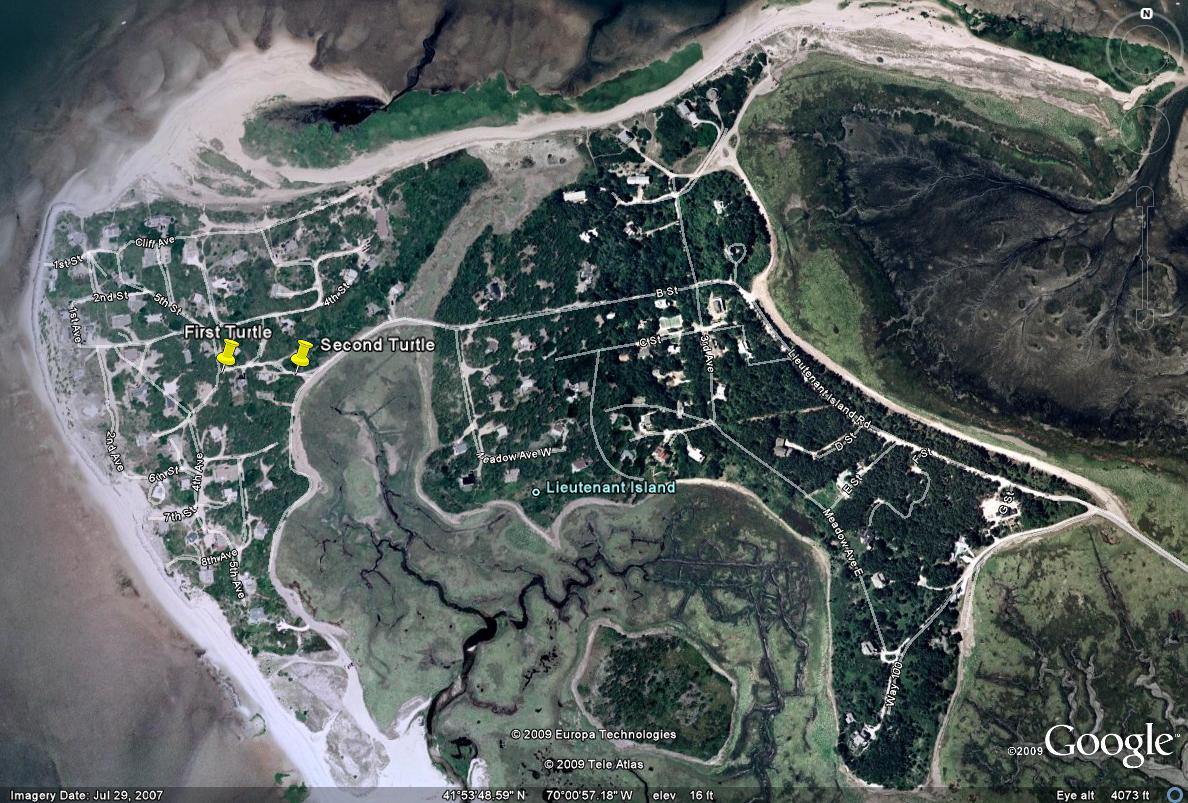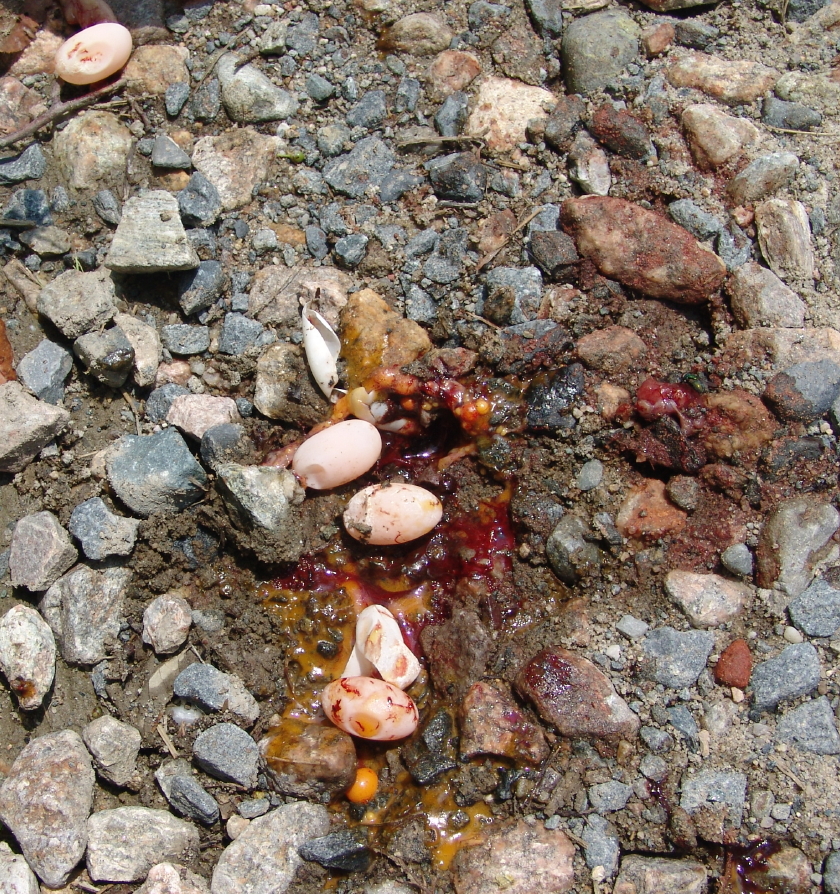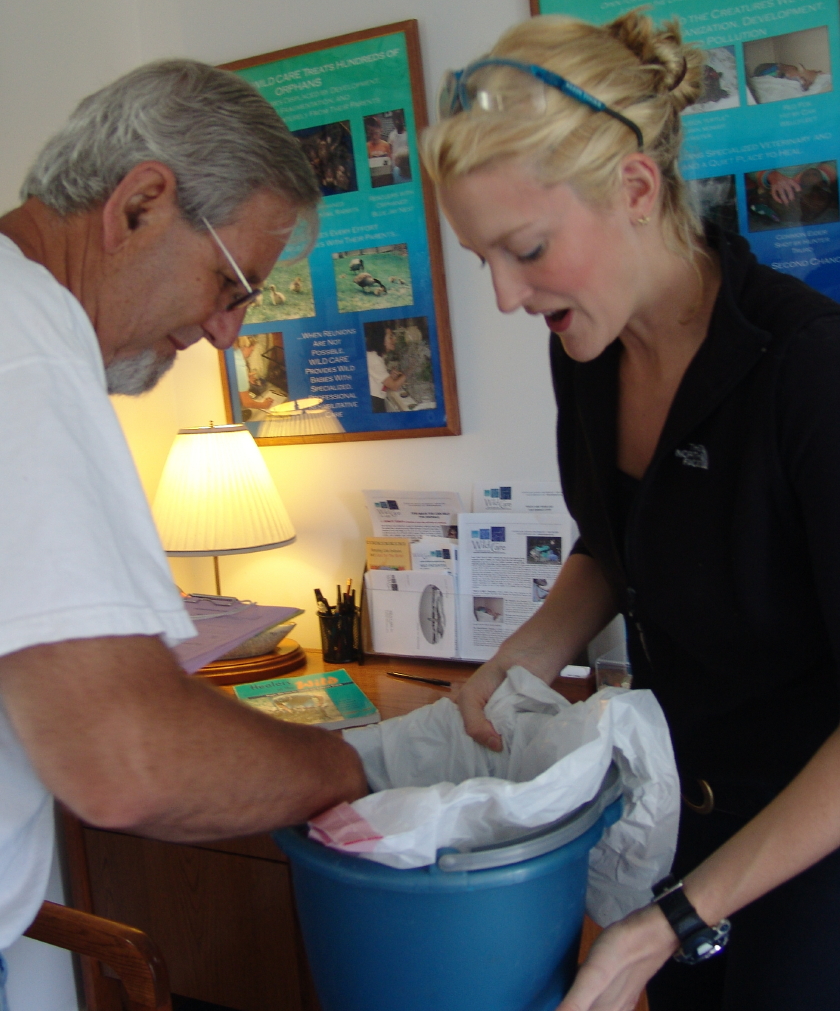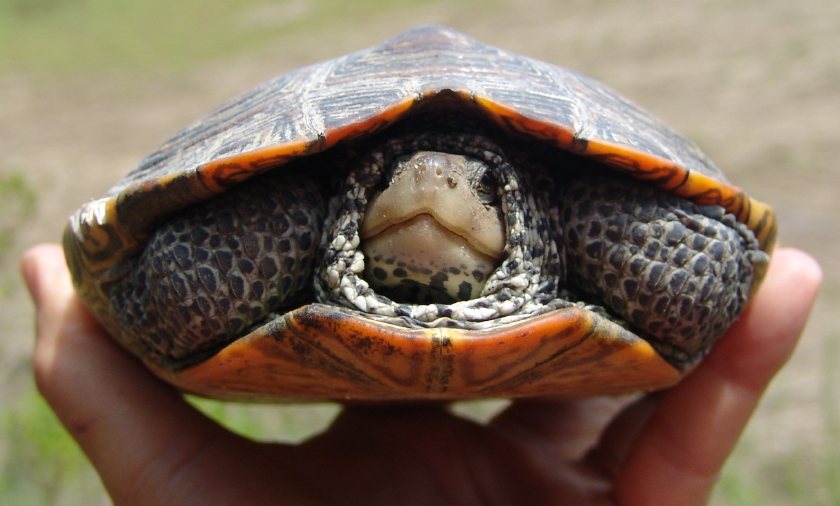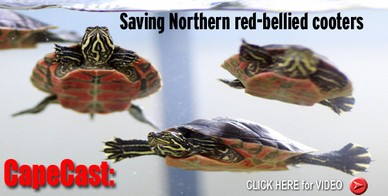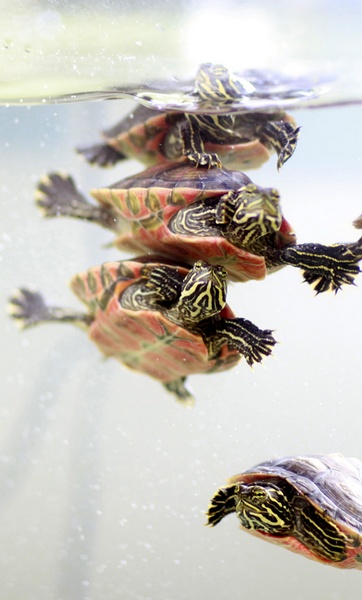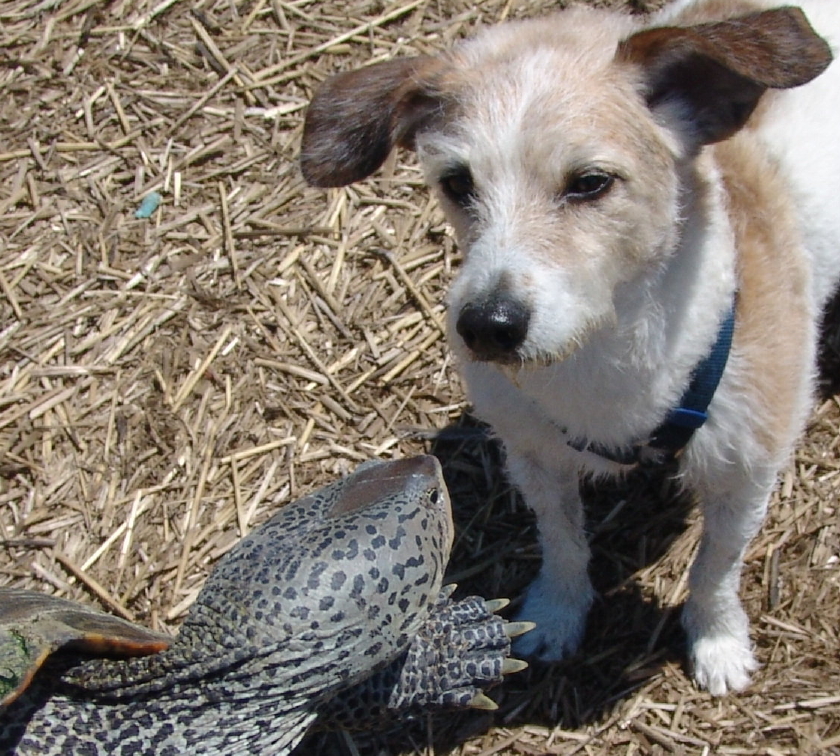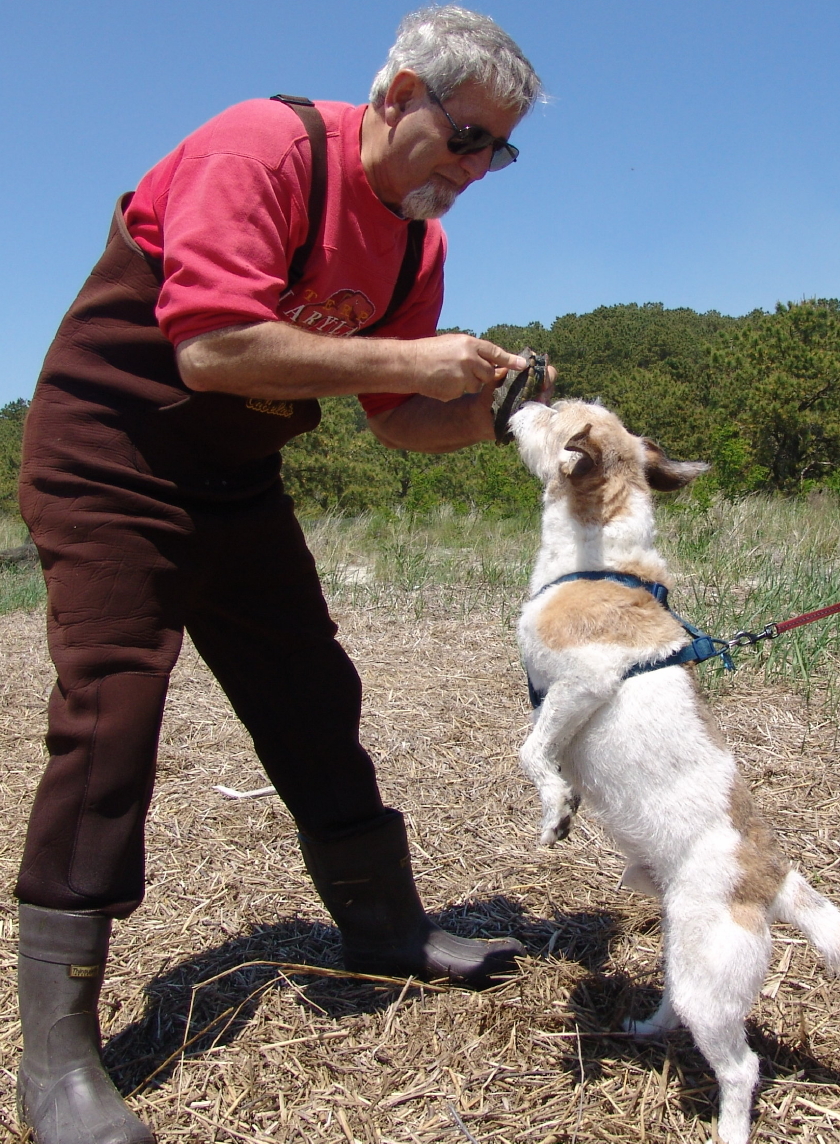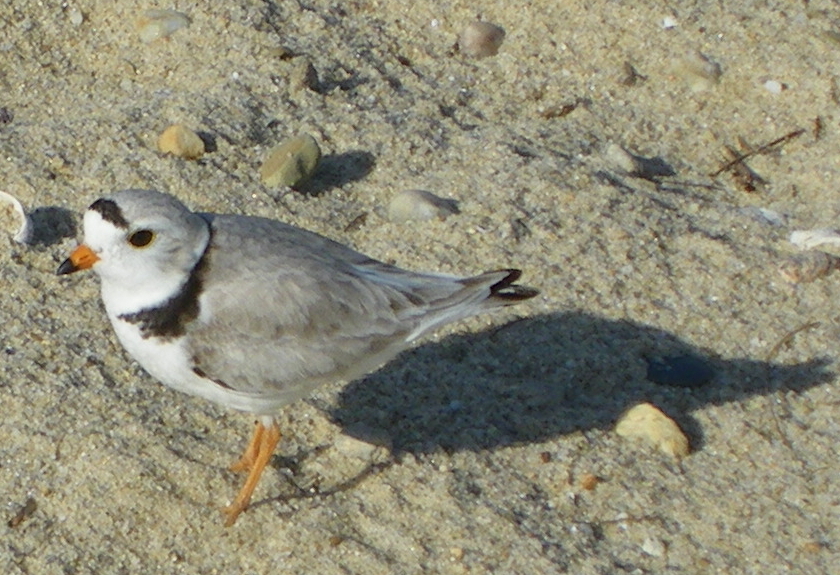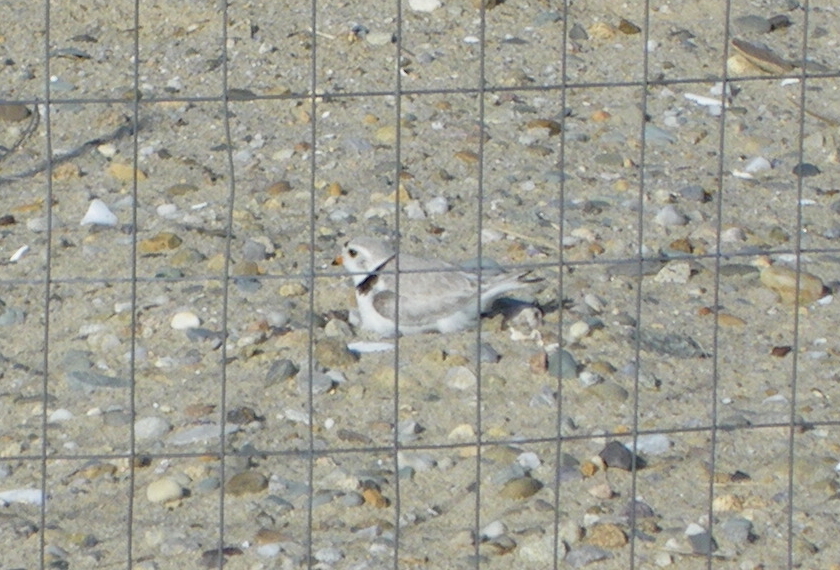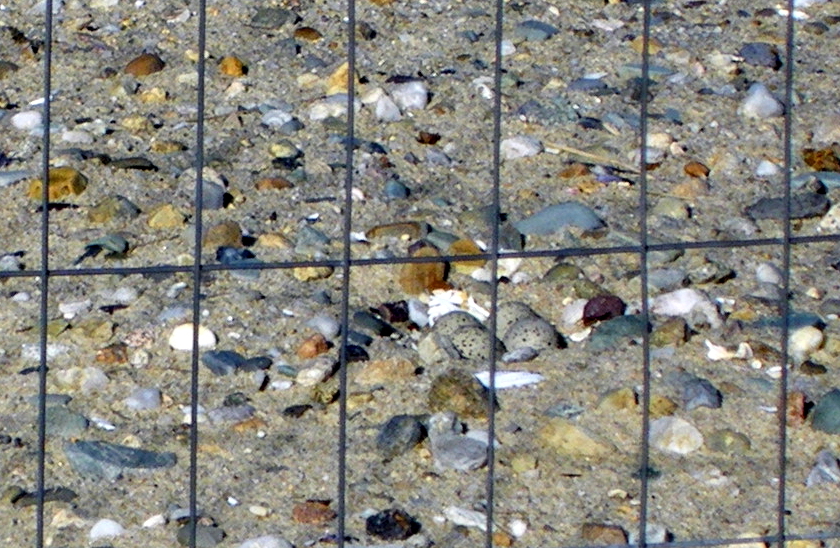Location Where Two Threatened Turtles Were Run Over
For a conservation researcher, the death of a single mature female in a threatened population is painful. The needless crushing of two nesting females within 50 feet and 50 minutes of each other by Lieutenant Island drivers on Friday morning ranks beyond tragic. It is devastating to the affected species and it doesn’t say anything postive about the effecting species, either.
[Editor’s note: Yes, we do have photographs of these animals to document the scene and their condition, but we are not posting them to our web site because they would offend … and anger … readers. They are available for state and local authorities at their request. The images of the scene that you will see below avoid showing the animals themselves.]
Scene of First Turtle Incident
The first turtle was run over by a driver that continued on his way, then was moved to the side of the road by a bystander who assumed she was dead. Her carapace was split open with blood oozing every where; yet she clung tenaciously to life.
Scene of Second Turtle Incident
While the Turtle Journal team sped her to Wildcare in Eastham for emergency treatment, a second female turtle was crushed to death at nearly the same spot. According to witnesses, a commercial fuel truck making a delivery to a cottage on the second island ran over her on its way out. She was crushed so badly that the center line of her carapace split open and eggs squirted across the road. Fully encased first clutch eggs that she was about to lay, as well as unfertilized eggs for her second clutch which she would have laid in another 17 days, were scattered across the roadway. An island visitor sobbed as we removed the carcass and harvested the eggs. Even the thought that we would try to save her DNA by incubating and protecting six potentially viable eggs we salvaged did little to abate the tears.
How Much Damage?
Due to high egg depredation and huge mortality of the few hatchlings that emerge, it can take a mature female two to four decades of continuous nesting just to reproduce a replacement for herself. Turtle reproductive strategies grind exceedingly slow, which makes it so difficult to restore populations declining under the pressure of human influence. The loss of breeding females, that are not plagued by a biological clock to limit productivity as they advance in years, and that actually produce more viable hatchlings as they age and grow; the loss of these female terrapins to the population is simply tragic and unsustainable. Two other female nesters were killed on Indian Neck roads on the other side of Blackfish Creekd, another road fatality was found today near the dike on Chequessett Neck Road, and at least one other was squashed while on a nesting run in Eastham. This year has proven a bad season for nesting terrapins. Reports have been filed for eight or nine diamondback terrapins run over on the Outer Cape, mostly in Wellfleet, so far this nesting season … with the second clutch nesting runs yet to commence!
Mitigating Damage
Don Lewis of Turtle Journal and Lela Lamed of WildCare
The first turtle is being treated at Wildcare where they will attempt to save her, and at the very least, to harvest her eggs for incubation. When we examined her at the scene, she still had function and response in each limb. The crack to the carapace did not extend across the vertebral. So, we are hopeful, but realistic. Such damage takes months and months to repair … if ever.
Six Potentially Viable Eggs from Lieutenant Island Road Kill
Sue Wieber Nourse of the Turtle Journal team harvested six potentially viable eggs from the dead terrapin. She carefully encased them in a sealed, cushioned and moist container for transport to a safe incubation site on the other side of the island. Don dug a turtle nest at the appropriate sand depth and optimal location for incubation at Turtle Point, then capped this mini-nest with a predator excluder. Sue and Don will watch it carefully through the summer with the expectation that we will find hatchlings emerging from these eggs around Labor Day Weekend. Watch TurtleJournal.com for “the rest of the story.”
Good News?
Yes, when you’re in the field with Turtle Journal, there’s always good news to balance the bad. At the scene of these two terrible accidents, Sue collected several other female terrapins on nesting runs amidst the July 4th weekend traffic. We moved them to a much safer location before more damage could be done.
Young Female Terrapin on Her First Nesting Run
One of these ladies was a young turtle that came out of Wellfleet Bay for the very first time to deposit her eggs. While our 30 year longitudinal study has allowed us to identify first time nesters, this one was the first such first time nester that we found en route to her nest. We took precise weights and measurements to tease as much scientific data as possible about this rare event. Then, when we moved her to a safer location out of the press of vehicular traffic, she immediately began to dig her nest and lay her eggs right in front of us. We videographed and photo-documented the entire event, and we were able to acquire even more data on her eggs and on her body weight after she laid them.  Because we don’t want to draw tonight’s post out too long, we will save the rest of this upbeat story for the next posting. Stay tuned!
